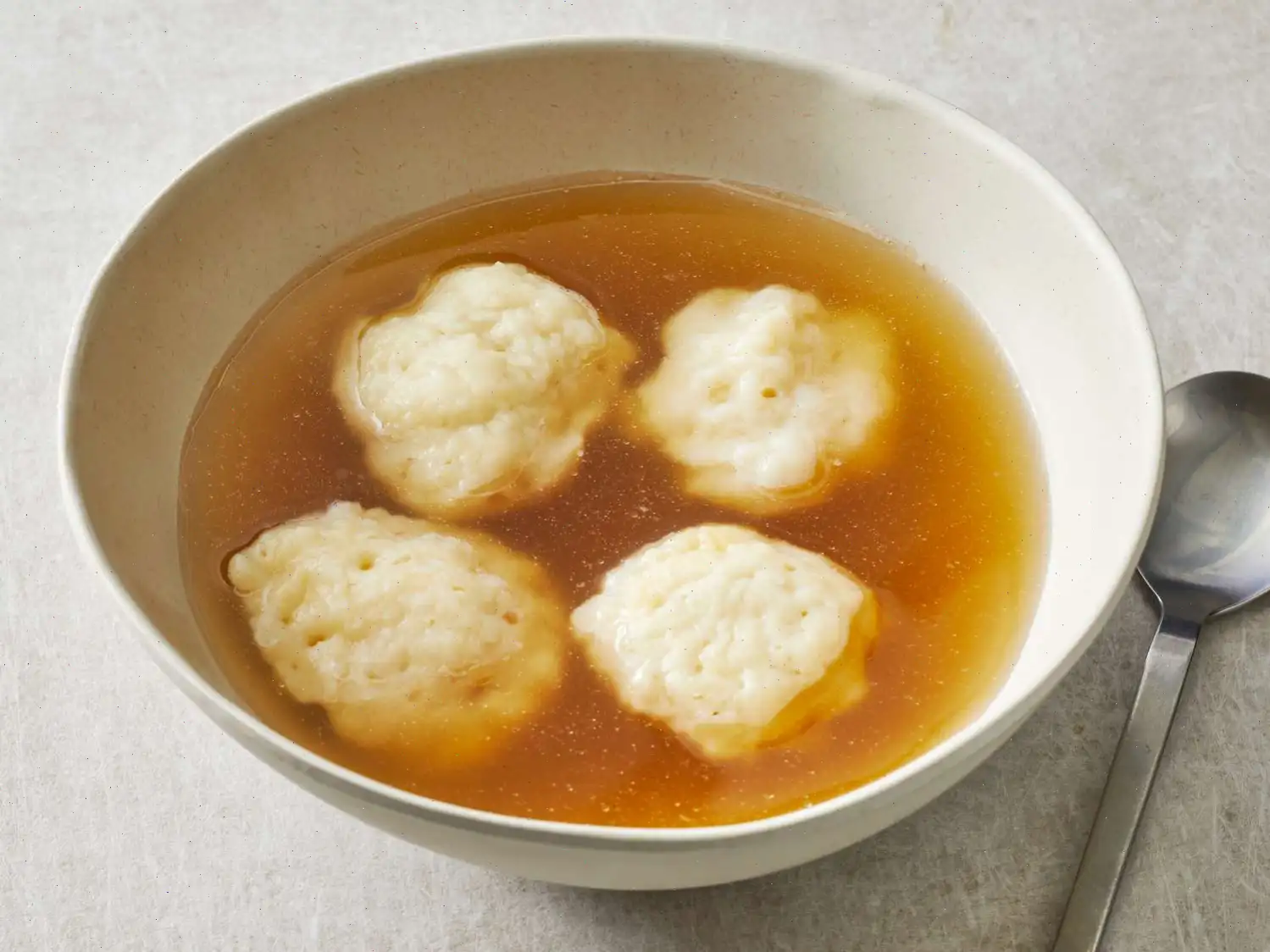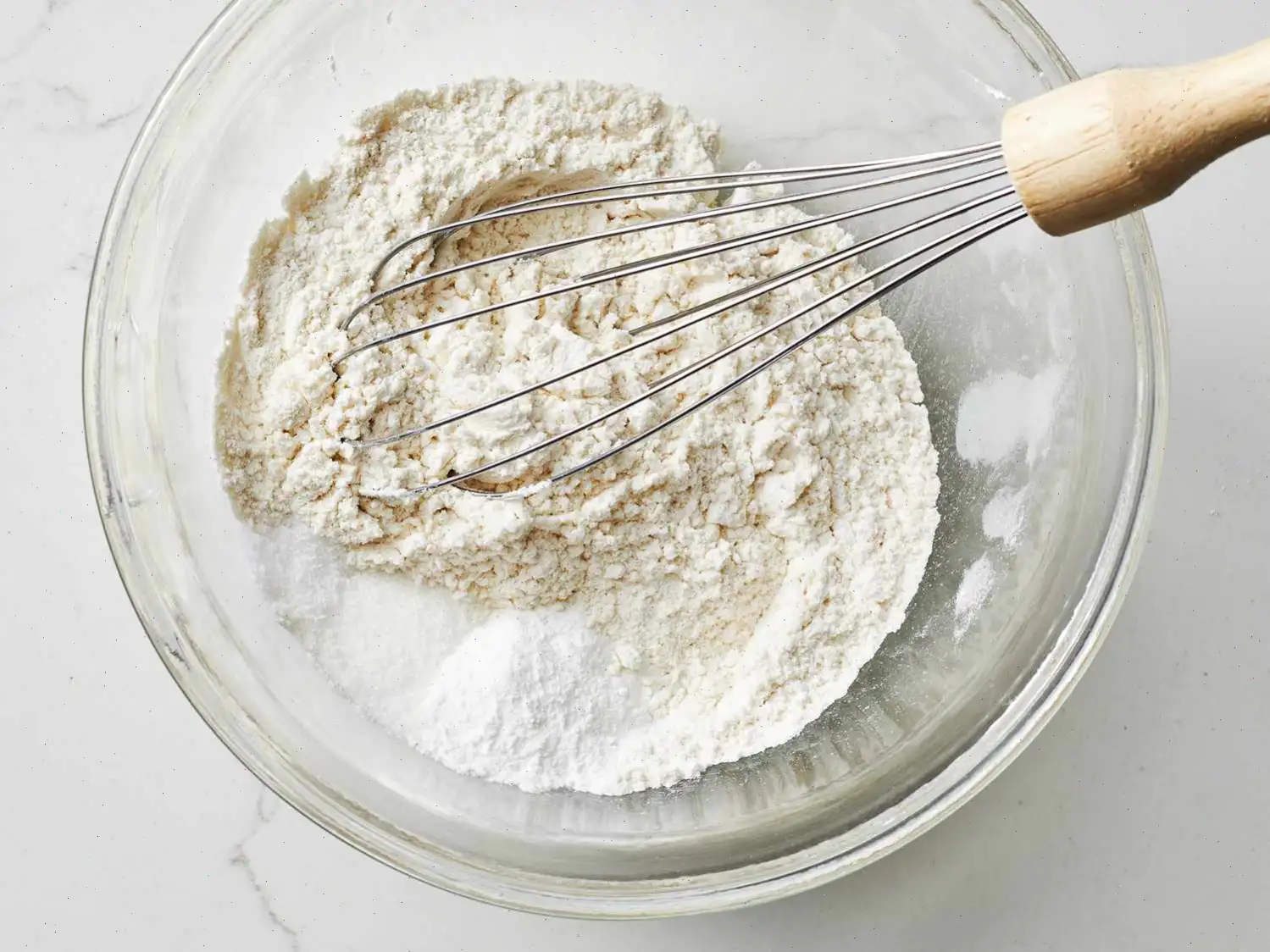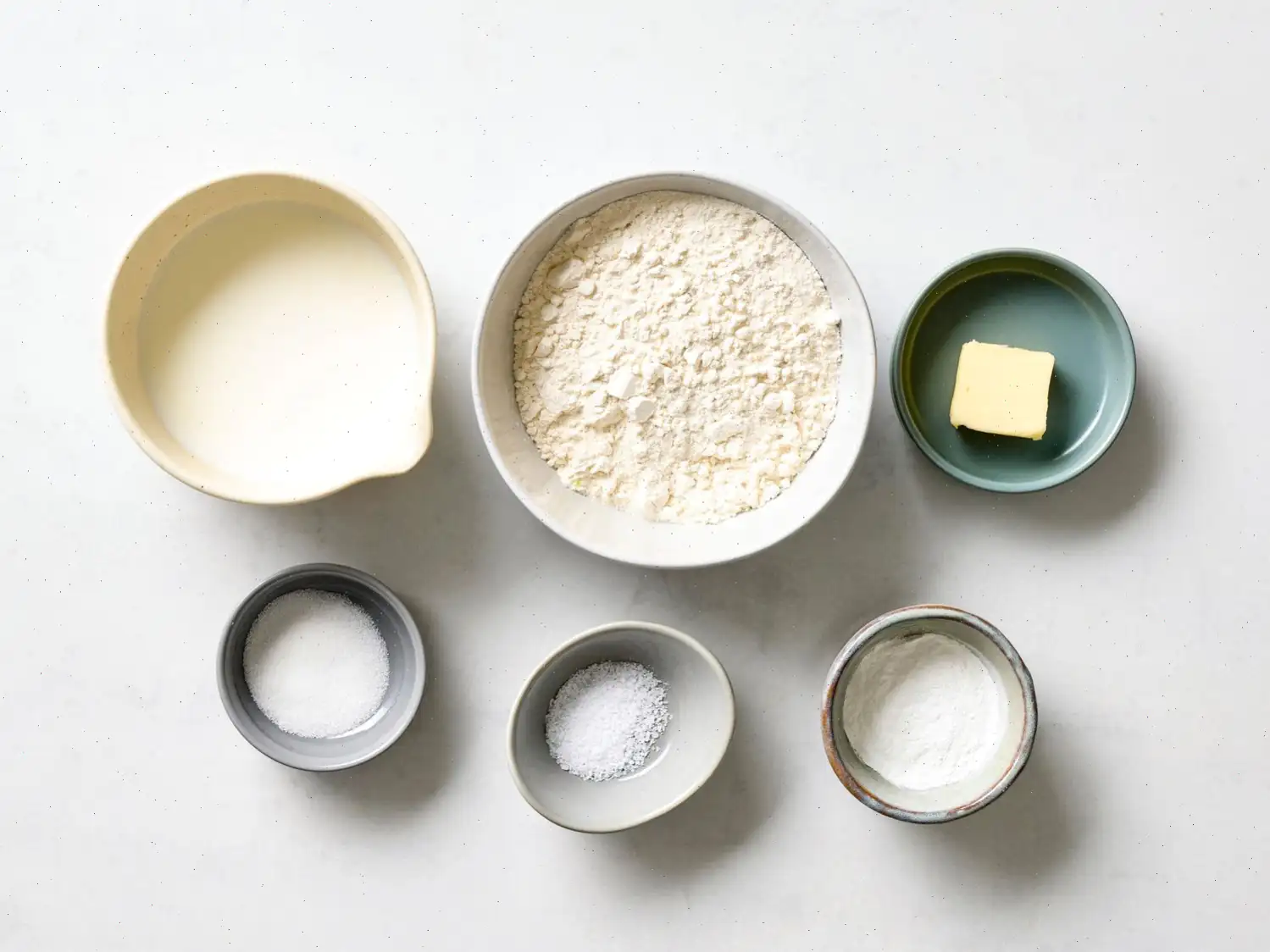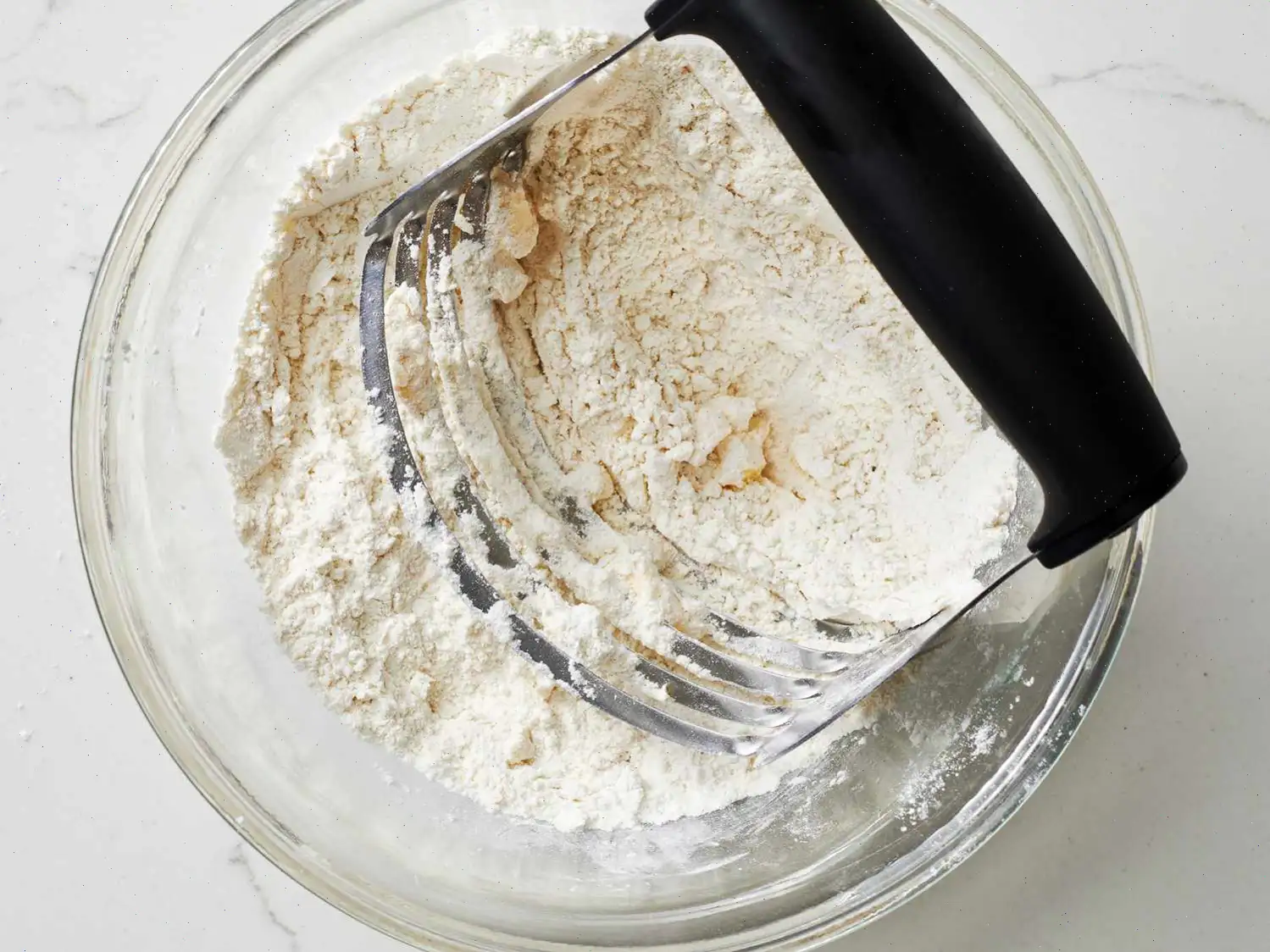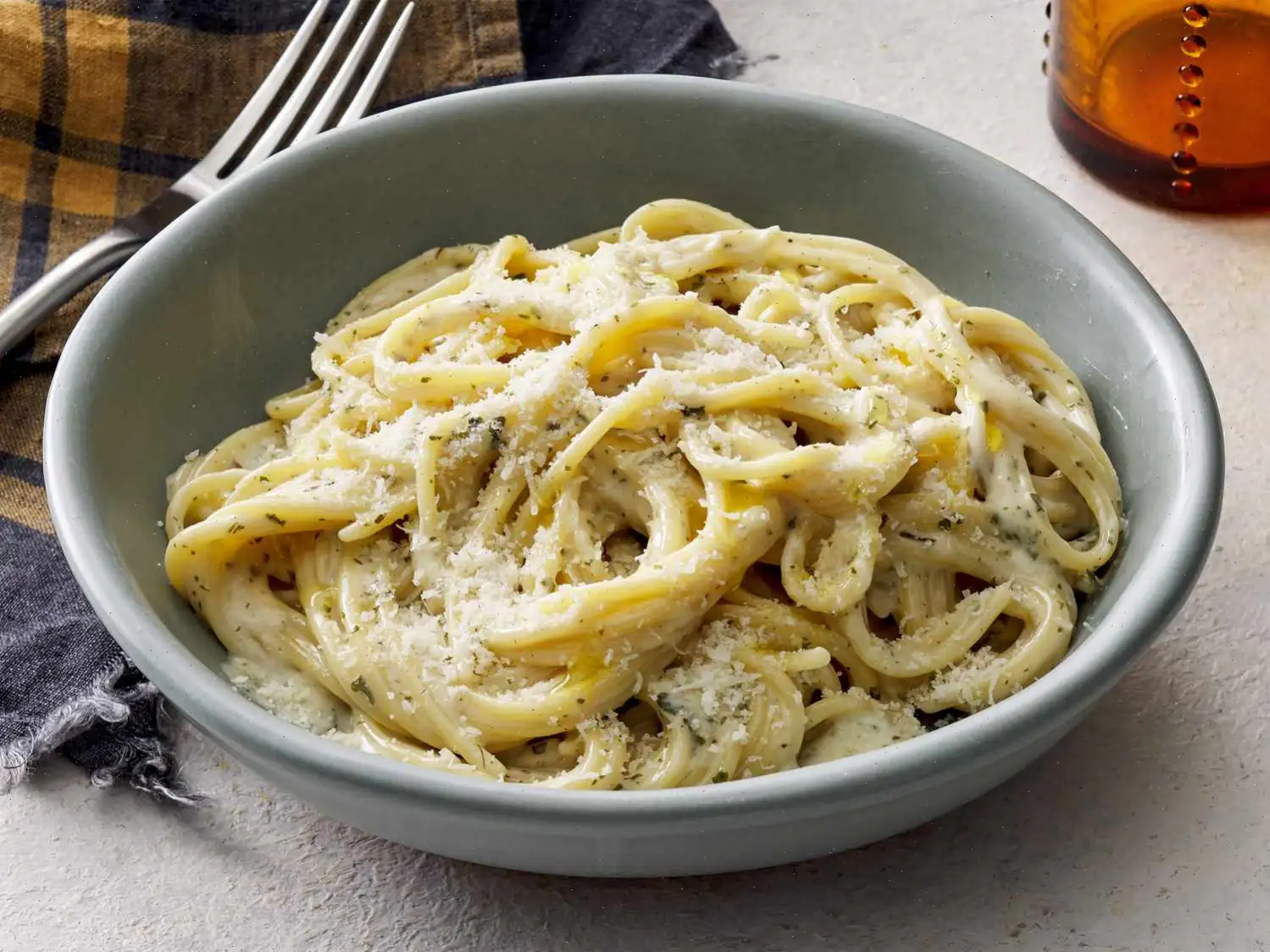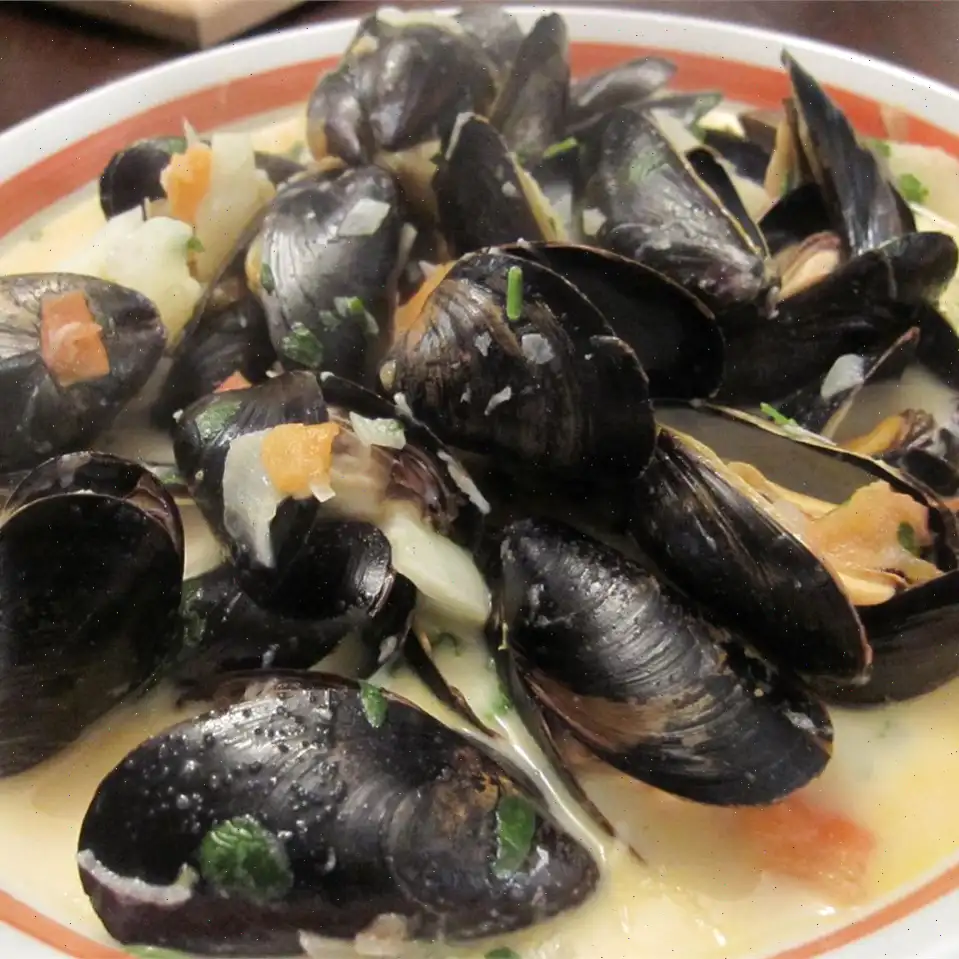
Homemade Dumplings Recipe (with Video)
Craving light, fluffy, and tender dumplings just like mom used to make? Look no further. These homemade dumplings are quick to prepare using only six common ingredients, and theyre even easier to devour. Follow this foolproof recipe, and youll get perfect dumplings every single time.
What Are Dumplings?
A dumpling is a small ball of dough that can be boiled, fried, baked, or steamed. With so many variations ranging from pork- and cabbage-filled Chinese dumplings to cheesy Polish ones the options are endless. The U.S. loves boiled drop dumplings, often paired with chicken and broth to make a comforting dish known as chicken and dumplings. These drop dumplings are easy to make: simply drop spoonfuls of dough into a pot of simmering soup or stew. The starch from the dumplings thickens the broth, creating a rich, flavorful stew that's impossible to resist.
Dumpling Ingredients
This recipe calls for just six ingredients that are likely already in your pantry:
- Flour: All-purpose flour provides structure, binding the ingredients together.
- Baking Powder: This leavening agent creates the lift, making the dumplings light and fluffy.
- White Sugar: A small amount of sugar adds a touch of sweetness and helps retain moisture, keeping the dumplings tender.
- Salt: A pinch of salt enhances the overall flavor of the dumplings.
- Butter or Margarine: Cold butter or margarine is cut into the dry ingredients to add tenderness and lightness to the dumplings.
- Milk: Whole milk helps form a moist, smooth dough.
How to Tell When Dumplings Are Done
To check if your dumplings are fully cooked, insert a fork or toothpick into one. If it comes out clean, the dumplings are done.
How to Store Dumplings
Leftover cooked dumplings or dumpling soup can be stored in an airtight in the refrigerator for 2 to 3 days. Gently reheat them on the stove or in the microwave in 10-second intervals.
How to Freeze Dumplings
If you want to have dumplings ready to go in the future, freeze the dough. Here's how:
- Drop spoonfuls of the dough onto a baking sheet.
- Flash freeze the dough for at least three hours (or overnight).
- Transfer the frozen dough to a freezer-safe or zip-top bag, and label with the date. Freeze for up to three months.
- When you're ready to cook, let the dumplings thaw for about 30 minutes and then drop them straight into your soup or stew.
Directions
- Step 1: Gather all your ingredients.
- Step 2: In a bowl, stir together the flour, baking powder, sugar, and salt.
- Step 3: Cut in the cold butter or margarine until the mixture becomes crumbly.
- Step 4: Stir in the milk and mix until a thick batter forms, one that can be scooped with a spoon.
- Step 5: Let the batter rest for 3 to 5 minutes.
- Step 6: Drop spoonfuls of the batter into boiling stew or soup.
- Step 7: Cover the pot and simmer without lifting the lid for 15 minutes.
- Step 8: Serve the dumplings hot and enjoy!
Cooks Note
To add a touch of flavor, try incorporating 1 tablespoon of parsley flakes into the dry ingredients for parsley dumplings. If you prefer a finer consistency, sift the dry ingredients before mixing them.
Nutrition Facts (per serving)
| Calories | 106 |
|---|---|
| Total Fat | 3g (3%) |
| Saturated Fat | 2g (8%) |
| Cholesterol | 7mg (2%) |
| Sodium | 364mg (16%) |
| Total Carbohydrate | 18g (7%) |
| Dietary Fiber | 1g (2%) |
| Total Sugars | 2g |
| Protein | 3g (6%) |
| Calcium | 118mg (9%) |
| Iron | 1mg (6%) |
| Potassium | 52mg (1%) |

Homemade dumplings are a beloved dish, known for their light, fluffy texture and their ability to enhance the flavor of soups and stews. These tender morsels of dough are the perfect complement to a hearty bowl of chicken soup or vegetable stew. But what makes them even more special is their rich history and regional variations across the globe. In this article, we'll explore the origin of dumplings, their regional differences, how they compare to similar dishes, and the fascinating facts behind this comforting dish.
History of Dumplings
The origins of dumplings can be traced back thousands of years, with variations appearing in multiple cultures. While the exact date of their invention is unknown, many historians believe that dumplings evolved as a way to preserve meat and other ingredients in a dough casing. In Europe, dumplings are thought to have originated in ancient Rome, where they were first made with bread and meats. By the Middle Ages, the concept had spread across Europe and Asia, evolving into a variety of forms depending on local ingredients and cultural preferences.
In the United States, dumplings became a staple comfort food, particularly in Southern and Appalachian cuisine. The American version of the dumpling, often called a drop dumpling, is a simple combination of flour, butter, baking powder, and milk, dropped directly into a pot of simmering broth. This method was especially popular in rural communities, where ingredients were limited but easy-to-make meals were essential.
Regional Variations
Different regions have put their own spin on the concept of the dumpling, adapting it to local ingredients and cooking styles. In China, dumplings (jiaozi) are typically filled with ground pork, beef, or vegetables and then steamed or fried. These dumplings are often served with soy-based dipping sauces and are a traditional dish during the Chinese New Year.
In Poland, dumplings (pierogi) are a staple of the national cuisine. These dumplings are usually filled with ingredients like potatoes, cheese, or meat and are either boiled or fried. They are often enjoyed with sour cream and sometimes sauted onions.
In the American South, dumplings are most commonly associated with "chicken and dumplings." This dish features pillowy dumplings floating in a rich, flavorful chicken broth, typically made with a mix of vegetables, herbs, and spices. The simplicity of the dumpling dough complements the depth of the soup, making it a hearty and satisfying meal.
How Homemade Dumplings Differ from Similar Dishes
Homemade dumplings differ from similar dishes, such as gnocchi or Italian-style dumplings, in both texture and preparation. While gnocchi is made from mashed potatoes or ricotta cheese and often requires rolling out dough into small pillows, the American-style dumpling is simpler. It is made by combining a basic dough and dropping spoonfuls directly into boiling soup or stew, where it absorbs the flavors of the broth while maintaining a light, airy texture.
Another major difference is the use of baking powder, which makes American dumplings fluffy and soft. Other dumplings, like the Chinese jiaozi or Polish pierogi, have a denser texture and are often filled with a variety of savory fillings before being cooked by steaming or boiling. The lack of filling in traditional American dumplings also makes them unique, as they serve more as a side dish than a main course.
Where Dumplings Are Traditionally Served
Homemade dumplings are commonly found in kitchens across the United States, especially during the colder months. They are most often paired with hearty dishes like chicken and dumplings, beef stew, or vegetable soups. In many households, dumplings are a go-to comfort food, often passed down through generations as a family recipe.
In addition to their popularity in the U.S., dumplings are also a significant part of many other cuisines around the world. For instance, in Russia, dumplings (called pelmeni) are traditionally filled with meat and served with sour cream. Similarly, in Germany, dumplings (known as kle or kndel) are often served with pork, sauerkraut, or roast beef.
Interesting Facts About Dumplings
- Did you know that dumplings have been a part of Chinese cuisine for over 1,800 years? They are a symbol of wealth and prosperity, especially during the Lunar New Year.
- In the U.S., dumplings are often served during cold winter months, especially around holidays like Thanksgiving and Christmas.
- In Eastern European countries, dumplings are sometimes filled with sweet ingredients like fruit, and are often served as dessert with a dusting of sugar or cinnamon.
- The word "dumpling" comes from the Old English "dumpling," which originally referred to a small round mass of dough that was either boiled or fried.
- Dumplings are versatile; they can be made from a variety of ingredients such as potatoes, flour, cornmeal, or rice, and can be sweet or savory.
Whether enjoyed as a side dish or a main course, homemade dumplings are a dish that brings comfort and warmth to the table. Their humble ingredients and simple preparation make them a perfect addition to any meal, while their history and regional variations show how this versatile dish has evolved over time to suit different tastes around the world.
You can listen to this recipe in AI audio format. Simply click the play button below to listen to the content in a format that suits you best. It’s a great way to absorb information on the go!
FAQ about Homemade Dumplings Recipe (with Video)
Comments
Raymond Scott
11/08/2023 06:05:12 AM
If I could give these dumplings a million stars, I definitely would. I've been searching for a from-scratch dumpling recipe like this for years and could never quite get them right, but these are absolutely perfect. They are light, fluffy, and buttery without being spongy or too soft. The only modification I made was doubling the butter, melting it, and then mixing it into the cold milk, causing the butter to harden in small bits. I then mixed the wet ingredients into the dry ingredients just until combined. This resulted in six nicely sized dumplings that were perfectly cooked after 15 minutes of simmering covered. Thank you for this recipe, it has brought me so much joy!
Karen Hall
01/06/2023 10:13:46 PM
I followed this recipe by sifting the all-purpose flour and using vegan butter (I needed two tablespoons to achieve a crumbly texture). I also substituted regular milk with 1/2 cup of oat milk. Pressing the dough into shape with a tablespoon measure and then rolling it with my hands worked perfectly! The end result was excellent, and it cooked in the expected timeframe. A fantastic vegan recipe!
Melissa Williams
05/16/2023 08:51:43 AM
The taste won me over. Thank you!
Julie Collins
08/29/2023 10:40:58 PM
This recipe is really disappointing. I do not recommend using it. The dish fell apart while cooking. It was a waste of ingredients and time.
Frank Davis
05/16/2024 04:46:44 PM
Simple and tasty
Maria Smith
05/19/2025 08:47:55 PM
Dumpling Doug's dough shouldn't be too dense and bready.



